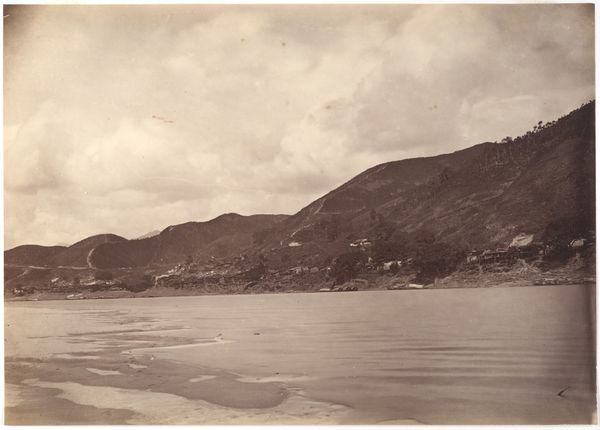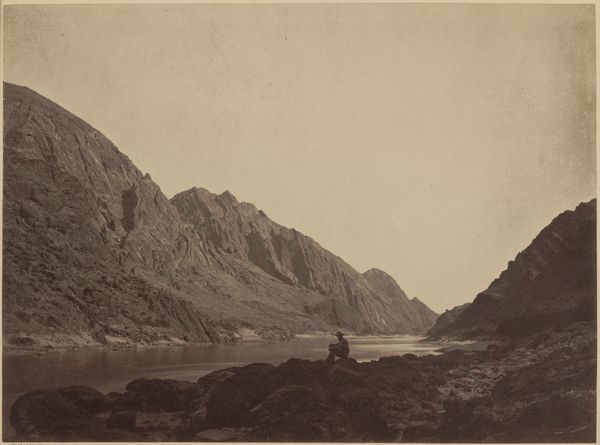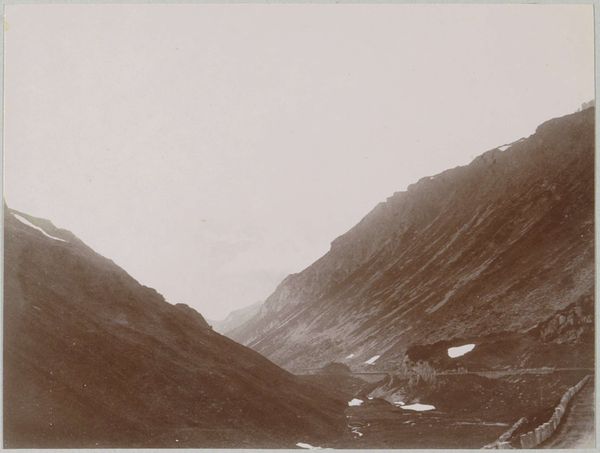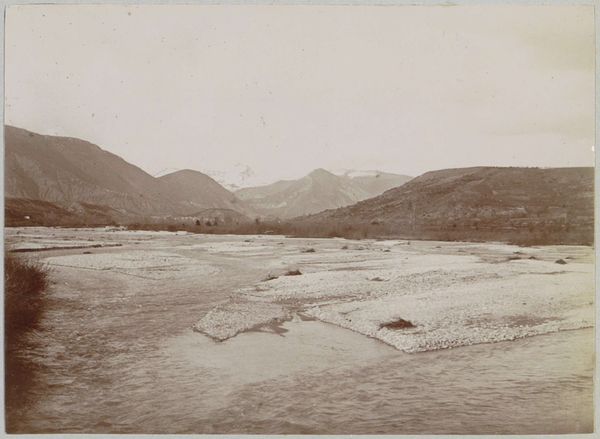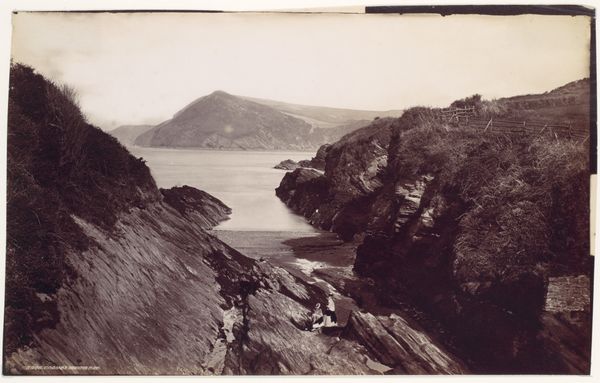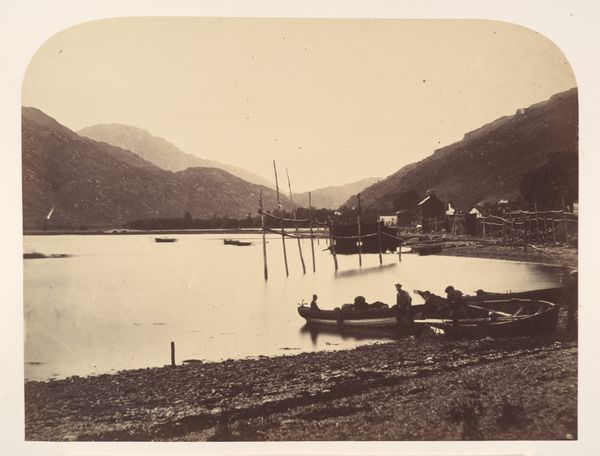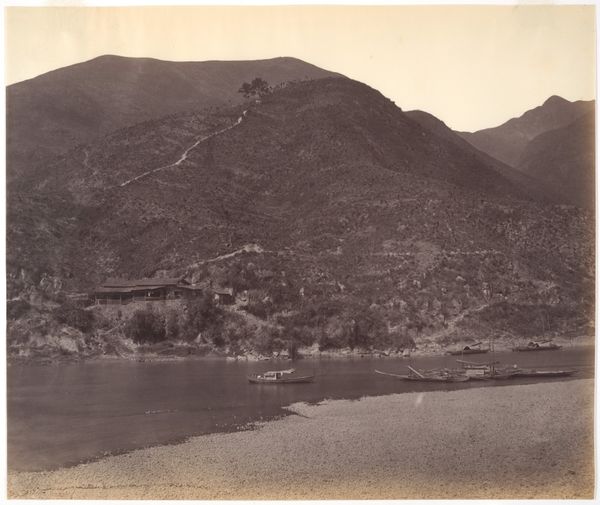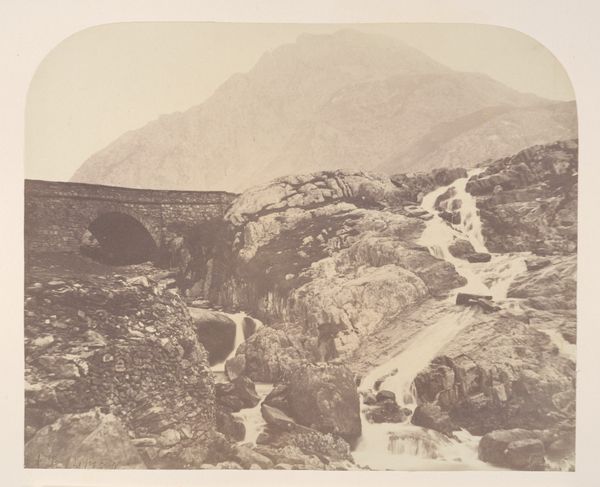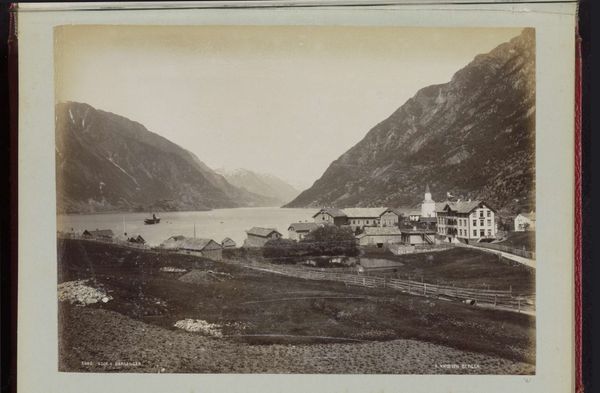![[untitled] by John Thomson](/_next/image?url=https%3A%2F%2Fd2w8kbdekdi1gv.cloudfront.net%2FeyJidWNrZXQiOiAiYXJ0ZXJhLWltYWdlcy1idWNrZXQiLCAia2V5IjogImFydHdvcmtzLzU3MDNhNjZiLTQ5MTgtNDJhOC04YjU0LTZlZDQzODIwYzUyOC81NzAzYTY2Yi00OTE4LTQyYTgtOGI1NC02ZWQ0MzgyMGM1MjhfZnVsbC5qcGciLCAiZWRpdHMiOiB7InJlc2l6ZSI6IHsid2lkdGgiOiAxOTIwLCAiaGVpZ2h0IjogMTkyMCwgImZpdCI6ICJpbnNpZGUifX19&w=3840&q=75)
Dimensions: Image: 8 1/16 × 11 5/16 in. (20.4 × 28.7 cm)
Copyright: Public Domain
Editor: This is an untitled landscape photograph taken by John Thomson in 1869. It's a gelatin silver print and it has such a quiet, almost meditative quality to it. What do you see in this piece? Curator: This photograph really speaks to the intersection of art, colonialism, and the representation of landscape. Thomson was documenting these regions at a time when European powers were aggressively expanding their influence. Do you notice the seemingly untouched "naturalness" of the scene? Editor: Yes, it feels very pristine and untouched. Curator: Exactly. But we have to ask: whose perspective are we seeing? Thomson's photographs, while seemingly objective, were products of a colonial gaze. This 'pristine' landscape flattens the existing social structures in the region by making them seem non-existent or uncivilized. Editor: So, it's not just a beautiful scene; it's loaded with political context? Curator: Precisely! We need to consider how these images might have shaped Western perceptions and contributed to the justification of colonial projects. Were indigenous communities present here and, if so, why were they omitted from this image? Thomson’s images contributed to a larger visual archive that promoted a romanticized idea of "untouched" lands ripe for "development." Editor: That completely shifts my understanding. It's a reminder that photography, even then, wasn’t neutral. It reflected the power dynamics of the time. Curator: Precisely! Understanding those dynamics is key to decolonizing art history. Editor: I'll definitely look at 19th-century landscape photography differently from now on. Thanks!
Comments
No comments
Be the first to comment and join the conversation on the ultimate creative platform.
